Recalling Fourth of July Festivities at Matinicus Rock Light
We are well familiar with the fact that on July 2, 1776, the American Colonies declared their independence from Britain. The very next day the Continental Congress revised the declaration penned by an appointed five-man committee and on July 4th, the thirteen colonies adopted the Declaration of Independence.
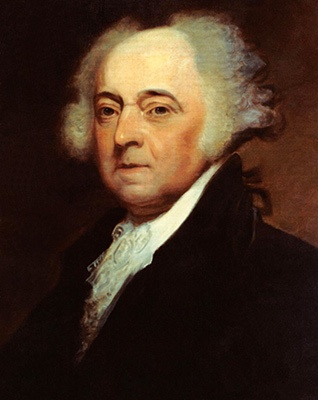
(Library of Congress photo)
The spirited action was so momentous that in a letter dated July 3, 1776 to his beloved wife Abigail, John Adams wrote the following excerpted sentiments:
“But the Day is past. The Second Day of July 1776, will be the most memorable Epocha in the History of America… I am apt to believe that it will be celebrated, by succeeding Generations, as the great anniversary Festival. It ought to be commemorated, as the Day of Deliverance by solemn Acts of Devotion to God Almighty. It ought to be solemnized with Pomp and Parade, with Shews, Games, Sports, Guns, Bells, Bonfires and Illuminations from one End of this Continent to the other from this Time forward forever more.”
The first illuminative and festive celebrations commemorating America’s declaration of Independence occurred – all as the Revolutionary War waged on, in the cities of Philadelphia and Boston on July 4, 1777.
Every year since, Americans have celebrated Independence Day on the Fourth of July in a variety of ways. From parades and picnics to patriotic events and grand fireworks, these traditions and more mark this special occasion.
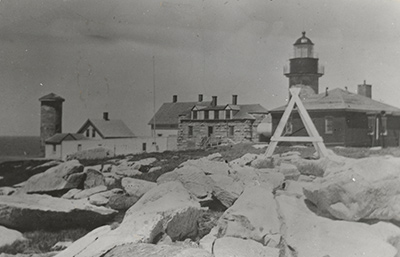
(U.S. Fish & Wildlife Service photo)
Looking back, do you think that John Adams could have imagined a reverent observance of Independence Day and all that the red, white and blue stands for at a place like far-flung Matinicus Rock Light Station – some twenty-two miles out to sea from the City of Rockland, Maine?
Not only did the keepers and their families at Matinicus Rock in the 1920s understand the importance of the occasion, they also knew how to celebrate the holiday in fun-filled fashion!
It was after Frank O. Hilt rose to the position of Head Keeper at Matinicus Rock in 1919 that we learn of this small but close-knit band’s keen interest in keeping with the spirit of the Fourth of July. From 1920 through 1929, an unnamed correspondent from among those who kept the light at Matinicus Rock wrote in to the Rockland Courier Gazette newspaper on a semi-regular basis to share the happenings on the “Rock.”
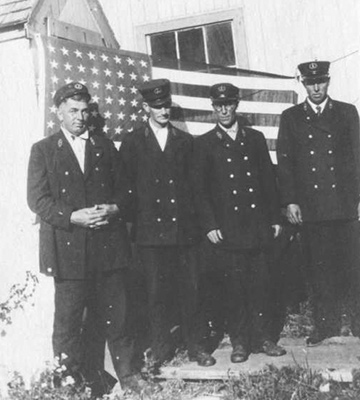
American Lighthouse Foundation photo)
During this time, the keepers playing a noted role in the Fourth of July observances were Frank O. Hilt, Arthur J. Beal, Napoleon B. Fickett and Austin B. Beal. Keeper Hilt’s wife Adora and keeper Arthur Beal’s wife Mabel were also right in the middle of all the fun. In fact, these ladies of the light held indispensable roles in all the memory-making at Matinicus Rock.
With Matinicus Rock being so distant from the mainland, the summer weather conditions were not always conducive to outdoor picnics, let alone a display of modest fireworks. In fact, fog was often prevalent, and with it, cool temperatures. Not exactly “fun in the sun” conditions for holiday celebrations such as the Fourth of July.
Though the letters from Matinicus Rock to the Rockland Courier Gazette hinted at a bit of disappointment some years due to the fog and cool temps, this intrepid group seemed to always rise above the challenges. Their spirits were undaunted as they made the best of whatever circumstances presented themselves.
The following accounts were excerpted from letters submitted to the Rockland Courier Gazette:
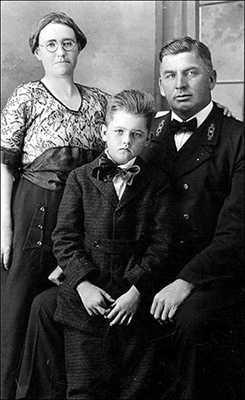
(Photo courtesy of Cynthia Tupper Oakes and Karen Oakes)
1920, July 8 – “Those who remained on the Rock Monday had their dinner and supper at A. J. Beal’s. The tables fairly groaned with good things to eat, including two kinds of ice cream. Everyone did justice to the food, especially Arthur Beal and F. O. Hilt. Each guest wore a flag. Fireworks marked the evening.”
1921, July 9 – “The fog has really lifted and we hail with gladness the beautiful sunshine. The Fourth did not pass by very quietly; flags were flying, the whistle blowing, a few horribles were on parade and a greased pig. The children enjoyed the fun and a great dinner was served out of doors, each marched to his seat at the table when a gun was fired by F. O. Hilt. In the evening lunch was served, and a very pleasant occasion came to an end at a late hour.”
Incidentally, those not familiar with the term “horribles,” Wikipedia offers up an explanation, noting, “The phrase parade of horribles originally referred to a literal parade of people wearing comic and grotesque costumes. It was a traditional feature of Fourth of July parades in parts of the United States in the 19th century, and “Horribles Parades” continue to be part of the Independence Day celebration in several New England communities.”
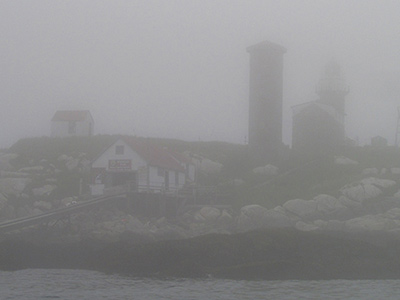
(Photo by Bob Trapani, Jr.)
1924, July 10 – “Friday, July 4, found all hands on deck. Lester Beal and Mrs. A. B. Beal had a running race of short duration but exciting while it lasted. Mr. Beal fell just before the finish receiving no injuries. The children made it exciting with pistols filled with water. If anyone got outside the door escaping a shower bath they were in luck. The evening was spent with A. J. Beal and family. A treat prepared by Mrs. A. J. Beal and Mrs. Hilt was served. Music for the evening was played on the Silvertone (phonograph). The party broke up at 11 o’clock. A pleasant ending of one more July Fourth.”
1925, July 11 – “True to the very letter, fog and plenty of it. On the fourth of each July the island group plans to spend the day pleasantly. It is seldom we can eat our dinner in the open air because of fog, rain or wind. This year it was fog and Mrs. A. J. Beal opened her doors for all hands. The dinner was a credit to the ladies and not only dinner but tea was served, and again, in the evening a dainty lunch was set forth. It was a very quiet Fourth – no guns, no large noisy fire crackers, not even a sound from the bell for all day but the fog signal sounded and that makes some noise.”
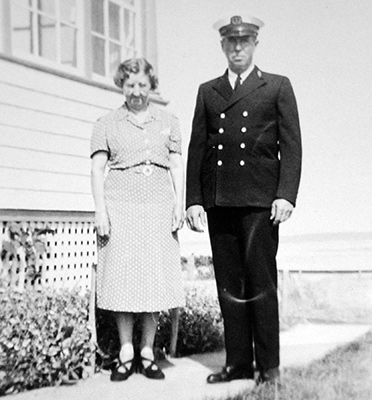
(American Lighthouse Foundation photo)
1926, July 10 – “The Fourth was a very quiet one and the family gathering was the smallest for a number of years, only seven to make the day a pleasant one.”
1928, July 12 – “The Fourth here was quiet, as usual with a swell dinner served indoor owing to the very cool breeze outside. Those present were the host and hostess – Mr. and Mrs. F. O. Hilt, with guests Mr. and Mrs. Hargreaves, Mr. and Mrs. Austin B. Beal, Miss Evelyn M. Hyer (keeper Hilt’s niece) and Willard R. Hilt.”
1929, July 11 – “The Glorious Fourth of July came in on time and with sunshine. A picnic dinner was held in the open and a late tea served indoors. Games were played and there was music in the air all day. Ice cream was served in the afternoon, and evening with all hands on deck, excepting Lou, who had an idea he would get a few winks of sleep.”
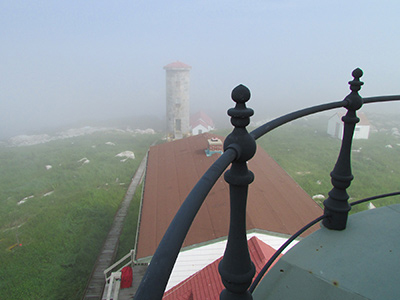
(Photo by Bob Trapani, Jr.)
Unlike some of the mainland light stations where there was more chances of interacting with the local community, offshore stations like Matinicus Rock were just the opposite. Simply keeping enough food and supplies on hand could often be challenging, while opportunities to converse with others in a social atmosphere outside of station life were few and far between.
It was vital to get along with those a keeper served with, or otherwise the duties were that much more cumbersome and lonely. Keepers and their families also had to have things to look forward to, whether that be time away from the light station or holidays. These occasions – no doubt marked on the calendar and highly anticipated, buoyed the spirits of the lighthouse families during long stretches of isolation and stormy weather. The Fourth of July was surely one such cherished time for the families at Matinicus Rock during the 1920s!
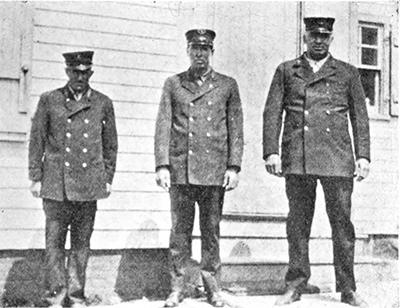
(Photo from the 1926 book, “Matinicus Isle” by Charles A. E. Long)
Today, freedom still rings true from coast to coast – and in history, at Matinicus Rock Light Station too. Something tells me that John Adams could have indeed envisioned the dedicated observances of the Fourth of July at the Rock by its keepers and families – and he would have beamed with pride. Happy Independence Day!
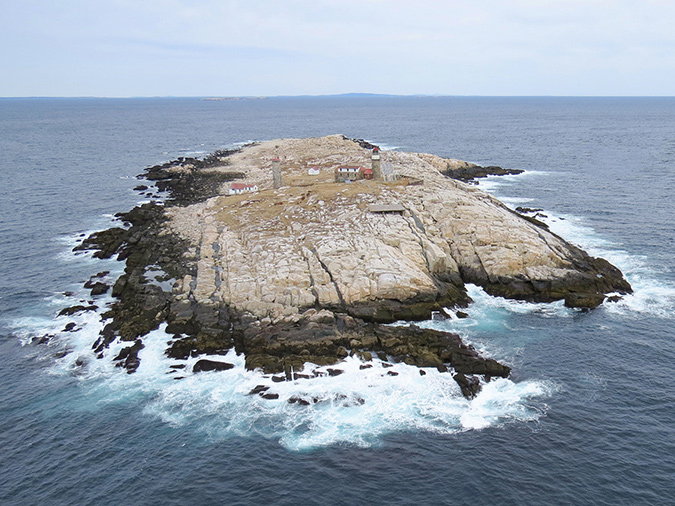
(Photo by Bob Trapani, Jr.)
The Prime Fireworks Observation Point
The very best place to watch the celebration associated with the Fourth of July was Conimicut Lighthouse. At dusk, the mountains of driftwood, crates and boxes collected by the folks who lived along the shore, and entered into some unofficial conflagration competition, would be touched off. Dozens of bonfires illuminating the reveling faces all along both sides of the bay to begin the night of America’s birthday.
Later the fireworks displays would begin with a bang, starting with the two amusement parks, Rocky Point and Crescent Park, which were clearly visible from our bell deck 50 feet above the water. Even the high rockets from Roger Williams Park, the Shipyard Drive-in Theater and High School Stadium in East Providence could be seen. Several of the yacht clubs had lesser shows but all visible from our lonely outpost.
They all would end with multiple final bursts and loud reports that echoed across the calm water. The bonfires would die to small glowing spots along the shore and we would imagine the neighbors drifting off toward their homes and beds. We would make one last check of the main light and all aides, the last entry into the log and head for our bunks.
Fred Mikkelsen, EN3 Conimicut Light Station, July, 1959
Thanks for sharing this great story! So nice that the lighthouse keepers shared their stories with the Courier Gazette – and that you took the time to put this together and share with us Bob! I am a descendant of seafaring men from Islesboro and stone cutters from Hurricane Isand, and have always been fascinated with stories about lighthouse keepers. Also loved the quote from John Adams. God bless America!
Jean Rowling Monroe
Even on a small island Independence Day can be celebrated. It is awesome how your traditions live on to this day despite runs your country